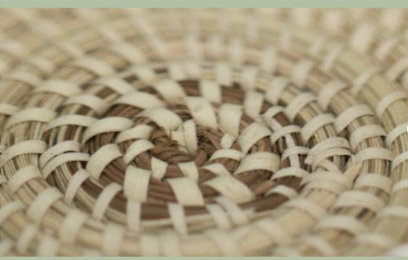Overview
Learning About Acorns with Molly of Denali

Authors: This Acorns Unit was researched, authored, and edited by the Center, California Indian Museum and Cultural Center, California Indian Education for All, and the San Diego County Office of Education. Key writers and researchers of this unit are Nicole Lim, Rachael Barger, Denise Davis, and Dr. Staci Block. The unit resources were designed and created from funding through the California Department of Education’s Native American Studies Model Curriculum grant and contract.
We gratefully acknowledge PBS KIDS and the creators of Molly of Denali for providing the video resources utilized in this unit. Their dedication to sharing Indigenous knowledge and fostering cultural understanding through engaging storytelling has significantly enriched our educational experience. For more episodes and resources, please visit PBS KIDS: Molly of Denali.(PBS KIDS) https://pbskids.org/molly/videos
Acorns Unit: Lesson 2 of 5
- Lesson 1: All About Acorns
- Lesson 2: Learning About Acorns with Molly of Denali
- Lesson 3: Native Americans and Acorns
- Lesson 4: How to Identify an Oak Tree and Acorn
- Lesson 5: Who Benefits from Oak Tree Gifts and How to be a Steward
Grades: K-2

Suggested Amount of Time: 45 Minutes
Curriculum Themes:
- Cultural Strengths
- Relationship to Place
Learning Objectives
By the end of the lesson, students will:
- Identify acorns and their role in nature.
- Understand how Indigenous knowledge relates to nature and ecosystems.
- Connect ideas from a Molly of Denali video to real-world learning about acorns.
- Engage in hands-on exploration of acorns.
Lesson Overview
Using a PBS KIDS Molly of Denali video, this lesson highlights the cultural and ecological importance of acorns through an Indigenous lens. Students watch a video, discuss key themes, and explore how traditional knowledge helps people care for the land. They make personal connections through observation, storytelling, and drawing activities.
Procedures
Engage
Engage: Show an acorn and ask:
"What do you think this is?"
"Why do you think this is important in nature?"
Briefly explain:
An acorn is a seed that grows into an oak tree.
Many animals, including squirrels, deer, and birds, rely on acorns for food.
Share that today’s lesson will include watching a Molly of Denali video about how people and nature are connected.
Explain
Set the Scene: Before starting the video, say:
"While we watch Molly and her friends, let’s think about what they learn about nature and how it helps them."
Play the Molly of Denali clip. Molly of Denali™ | Birch Bark Besties | PBS KIDS or Sap Season | Molly of Denali Full Episode!
After the video, discuss:
"What did Molly learn about nature?"
"How does this remind us of acorns and their importance?"
Highlight how Indigenous knowledge often emphasizes respecting and understanding the natural world.
Explore
Distribute acorns to students for observation.
Encourage them to touch, smell, and look closely at the acorns.
Discuss the parts of an acorn (cap, shell, seed) and their purpose.
Ask:
"Why are acorns important to animals and trees?"
"How can we help protect nature like Molly does?"
Elaborate
Option 1: Drawing and Writing
Students draw an acorn and write one thing they learned about it.
Add a connection to the video: "What would Molly say about acorns?"
Option 2: Storytelling
Ask students to imagine and share their own story about an acorn’s journey, inspired by Molly’s adventures.
Evaluate
Review key points:
What is an acorn?
Why are acorns important in nature?
What did Molly teach us about caring for nature?
Encourage students to share one thing they learned with a family member or friend.
Extend
Outdoor Activity: Take students outside to collect and observe acorns.
Cultural Learning: Explore Indigenous stories about oak trees or nature.
Art Connection: Create an acorn-themed art piece inspired by Indigenous designs.
Assessment
Observe participation in discussions and activities.
Check drawings or stories for understanding of acorns and their connection to the lesson.
Unit Background
This interdisciplinary unit invites students to explore the acorn—a small seed with enormous ecological and cultural importance. Through hands-on experiences, storytelling, video content, and creative expression, students will develop an understanding of the life cycle of acorns and oak trees, their role as a keystone species, and the vital ways Native American communities have used, respected, and protected oak trees and acorns for generations. Drawing from Indigenous perspectives and knowledge systems, students will engage in place-based and inquiry-based learning that nurtures curiosity, empathy, and a sense of responsibility for the natural world.